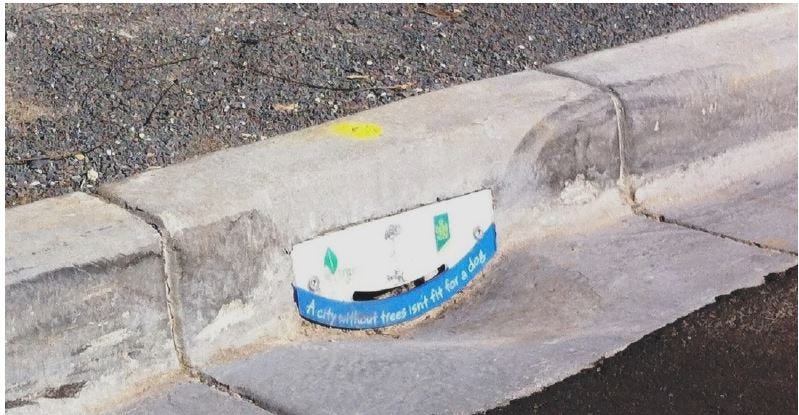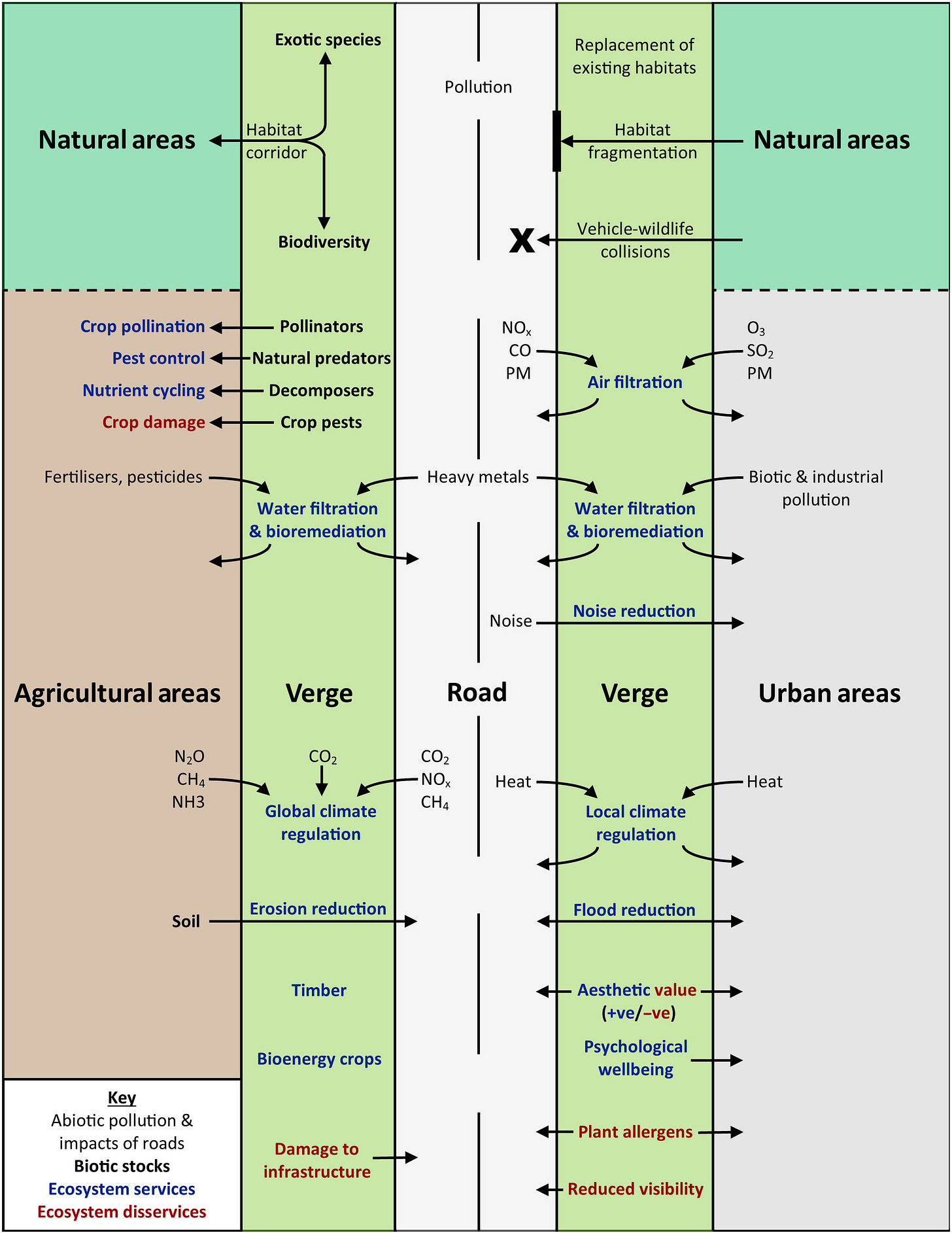Planet Hand-Me-Down: Roadside Verges Part 2
In which we look at some of the other positive effects these forgotten places bring.
In Part 1, we looked at some of the positive effects that roadsides verges have for biodiversity and specific animal and plant communities, habitat connectivity and conservation potential. We’ve seen their importance in preserving the legacy communities that ruled the roost in the time before. All over the world studies have been released that are unanimous in understanding roadside verges as a positive emergent property of transport infrastructure, and there can only be more connections waiting to be unearthed.
However, there is some amazing interplay happening between the benign verge and many other issues. The purpose of Part 2 is to highlight these braids, so as to engender a more contextualised sense of their amazing reach. Given the spread of such threads I do hope something in here tittilates you, and if you are afflicted with the meticulous like me there sure will be, so let’s dive right in!
Carbon Sequestering
In 2013 (1) a team at the USDA Forest Service released a paper in which they calculated the total amount of carbon storage provided for by trees inside urban habitats in the United States. While this will invariably include parks and other high density areas, a large amount of this can be attributed to trees in greenspace provided by roadside verges. They found that the trees accounted for 643 million tons of carbon storage worth an estimated $50 billion, with an ability to sequester 25 million tons a year.
To help put this into perspective, this is just over 50% of the carbon sequestration ability that the entire world had by 2023. That makes either this fact very impressive, or the worlds ability to capture carbon a little sad. I’ll graciously let you decide.
Particulate Filtering
When looking at roadside verges in Berlin in 2014, Weber et al. (2) found that the herbaceous perennial plants that make up the average ground cover were effective in immobilising the particulate matter kicked up by daily traffic. This is an interesting prospect given the amount of horrors we have unfolded about microplastics and car tyres, as it indicates that without these wonderful green strips we may have found the situation even worse for ourselves. studies before had found the filtering capabilities of roadside trees, but to know that low level, low maintenance vegetation still does an admirable job.
The cherry on top for me was that the types of particulate matter being caught by these plants appeared to be species specific, relying on such things as leaf morphology and hairiness! Reading that conjured up memories of the film Nausicaa of The Valley of the Wind, and the sometimes bizarre way the natural world orders itself.
Flood/Runoff Management
Off to Australia now (3), specifically the cities of Mitcham and Salisbury in 2016. A large team installed storm drains that led water directly to trees and inlets in verges connected to leaky well systems to divert rainwaters to adjacent soils in a manner that prevents water buildup. This has led to easier management of heavy rain periods, lower maintenance costs for both cities, and more resilient greenery in summer and times of water stress. Coupled with the well understood effect that vegetative cover has on flooding, this is a brilliant use for such places, and their ubiquity ensures that everyone benefits from such effects.
Backing up these findings in 2016 (4) comes a paper looking at managed and unmanaged road strips in Virginia. The authors found the peak flow reduction of runoff from the adjacent highway for the managed strips was 80%, and the unmanaged strips clocked in an even more impressive 87%. This is fantastic as an indicator of flood defence potential, but also good as highway runoff is a mix of oil, microplastics, heavy metals and surface dust which these greenspaces shoulder the majority of.

Aesthetics and Beautification
Here we turn to the Scandinavian Peninsula in 2014 (5), with a 14 page report in every possible aspect of the aesthetic properties of roads. The authors land on 12 visual characteristics, and the road verge is intimately braided through this. Most of the positive aesthetics associated with the road network come from the greenspaces created by it, and this can be associated with reduced driver stress as well (6). Finally, infrastructure beautification has also been found to positively affect house prices (7).
Urban Cooling Potential
Last but not least, lets pop back to 2010, where a study (8) investigated the effect that urban vegetation had on the ‘urban heat island’ effect. For those who don’t know, due to the reflective surfaces and concrete composition that makes up your garden variety city, these locations can experience higher average temperatures and more uncomfortable heat than the surrounding countryside.
What Shashua-Bar and company found was that the green areas of a city counteracted such effects as to almost nullify them, in what was first described as the 'park cool island’ effect, and proved then to be just as effective outside of the parks that are their namesake. This of course then leads to savings, both economic and in terms of public health.
That’s Not All Folks…
If you want to know about even amazing affects attributed to these often overlooked places, then have a read of these three papers (9) (10) (11), which have pretty extensive summaries and loads of information that I haven’t touched upon. For the visual learners of you there is this fantastic diagram covering all of the major links and connections between agriculture, biodiversity, urbanity and the humble road verge.

The heading of this section is however a little misleading, as this is going to be all from me. I hope this two part series has been informative and interesting, and I can’t wait to be back with something new in the next week. The readership has been slowly growing, and to those of you already here I thank you so much for your support. To those of you who find me through this article, hello! I think the next article might be on bees and bee hotels, but that is always subject to change!
Until next time.




